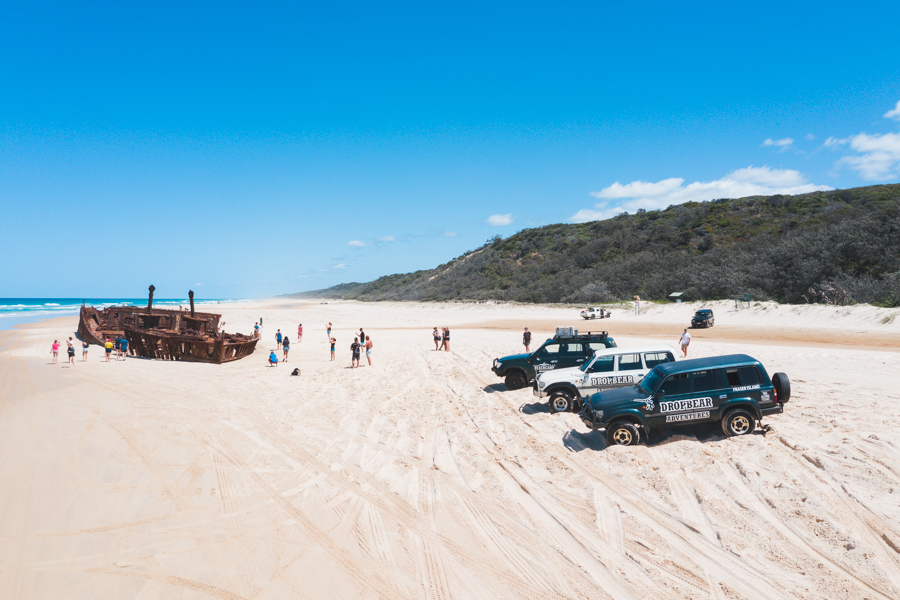Profile
Blog
Photos
Videos
Rainbow Beach was chosen as the next port of call simply because of it's name and interesting summary that the Lonely Planet guide gave it. The town's name derives from the rainbow-coloured sand dunes surrounding the settlement; according to the legnds of the Kabi people (the local Aboriginies) the dunes were coloured when Yiningie, a spirit represented by a rainbow, plunged into the cliffs after doing battle with an evil tribesman. Much of the sand colours stem from the rich content of the minerals in the sand. The town itself consists of a small urban area of residential homes and about three backpacker hostels as well as a tiny high street hosting six shops which leads down to the beach. The main reason for my visit here though is to see Fraser Island...
Fraser Island is the largest sand island in the world at 1630 kilometres square; it's length is approximately 120 kilometeres. My tour bus collected me from my hostel; it looked like normal coach at first but then I noticed it's huge wheels which would take me over the sand. The bus arrived at Inskip point where it drove onto a ferry. Ten minutes later I had arrived on Fraser Island.
The bus made it's way eastwards towards 75 mile beach. This beach acts as a highway for all traffic as well as a runway for planes. There were a few attractions along this stretch of beach including the Maheno shipwreck and Eli Creek.
The S.S. Maheno was originally built in 1905 in Scotland as a luxury passenger ship for trans-Tasman crossings. During the First World War the ship served as a hospital ship in the English Channel before returning to a luxury liner. In 1935, the ship was declared outdated and so was transported from Melbourne up north to be used as scrap metal. During it's journey it was caught in a cyclone and a few days later the ship beached on Fraser Island. During the Second World War, the ship was used as a target in bombing practice for the RAAF. The ship has since become severely rusted, with almost three and a half storeys buried under the sand.
The second attraction was Eli Creek; the largest creek on the east coast of the island. 80 million litres of water flow down it each day. I walked upstream; the current was quite strong but the water was so clear.
Next, I was driven inland. Fraser Island has over 100 dune lakes; the freshwater lakes on the island are some of the cleanest in the world. I was taken to visit Lake McKenzie. It is a 'perched' lake sitting on top of compact sand 100 metres above sea level. The lake has an area of 150 hectares and is just over five metres in depth. The beach sand of Lake McKenzie is nealy 100% pure silica. The lake really is stunning especially with clear a blue sky as a backdrop. The water was warm and extremely inviting; I was able to relax here for an hour or so.
The final stop before heading back was at Central Station. The station is surrounded by bushwalking tracks. Here I saw some of the many plants that inhabit the island; some of the rarest ferns grow here.
Overall, I thought the trip was a little too expensive, but, I did learn from it and I did see a beautiful lake. Most importantly though, I can cross off the list!
- comments




